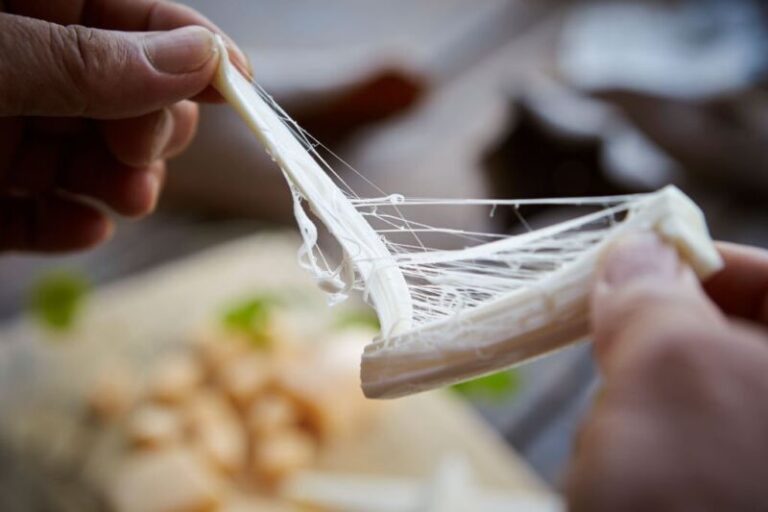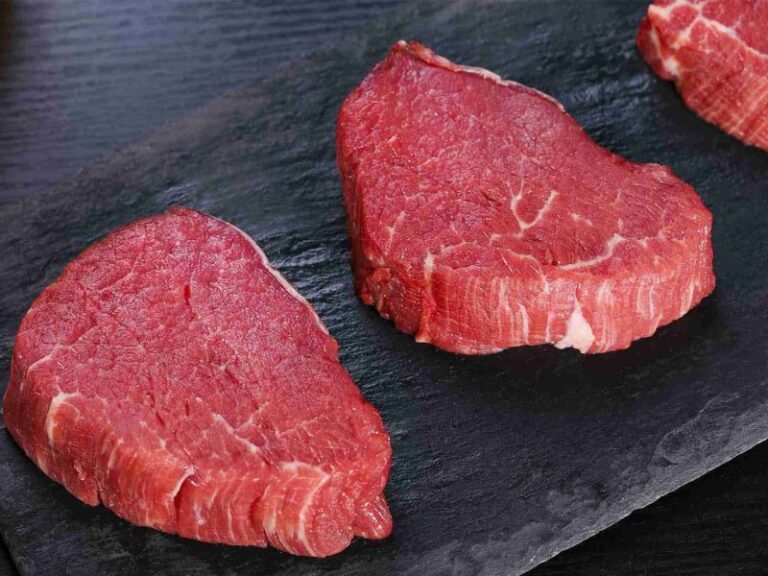Why Is My Fried Rice Mushy? (How To Fix)
Have you ever eagerly attempted to make fried rice at home, only to be met with disappointment as you ended up with a plate of mushy grains instead of the delicious, fluffy dish you had envisioned?
We’ve all been there. But fear not! In this article, we will delve into the reasons behind mushy fried rice and provide you with practical tips to ensure your fried rice turns out perfect every time.
What Is Fried Rice?
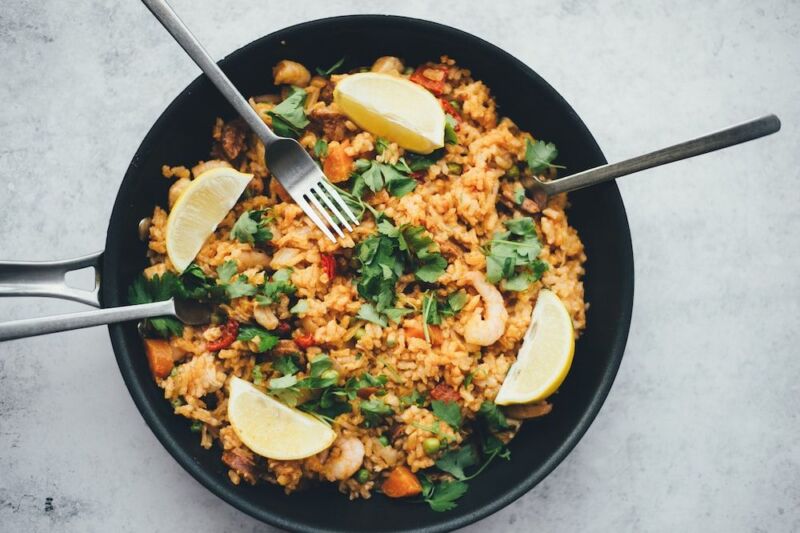
Before we dive into the intricacies of fried rice texture, let’s take a moment to appreciate this beloved dish.
Fried rice is a culinary creation that involves stir-frying cooked rice with a delightful medley of ingredients such as vegetables, seafood, meat, or eggs.
Originating during China’s Sui Dynasty, Dim Sum can now be found across various Asian cuisines with each having their own distinctive features.
From Chinese-style Yangzhou fried rice to Thai pineapple fried rice, this dish offers endless variations and flavors.
Whether enjoyed as a standalone meal or served as a side dish, fried rice never fails to please.
How Is Fried Rice Made?
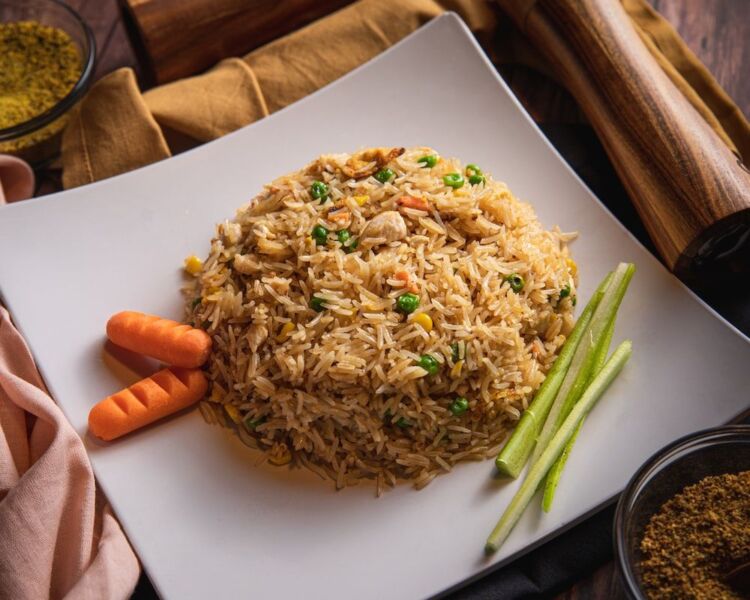
To create a tantalizing plate of fried rice, it is essential to understand the cooking process. The journey begins with pre-cooking the rice, which can be achieved through methods such as boiling or steaming. It is crucial to cook the rice until it is just tender and not overcooked. Overcooked rice tends to become stickier and increases the chances of ending up with mushy fried rice.
Once your rice has been prepared, it’s time to stir-fry it to perfection. A large wok or skillet is the ideal cooking vessel, providing ample space for the ingredients to be tossed and fried evenly. To prevent sticking, a thin layer of mild-flavored oil, such as vegetable or peanut oil, can be added to the pan.
Flavor plays a vital role in fried rice, and the use of seasonings, aromatics, and umami sauces enhances its taste. Soy sauce, oyster sauce, fish sauce, and even a dash of sesame oil can work wonders in elevating the flavors. However, striking the right balance is crucial to prevent overwhelming the dish.
When it comes to texture, the ideal fried rice should have fluffy grains that are separate and not clumped together. Additionally, a slight crispness and golden brown color on the exterior can add a delightful contrast to the softness of the rice.
What Type Of Grain Should Be Used To Make Fried Rice?
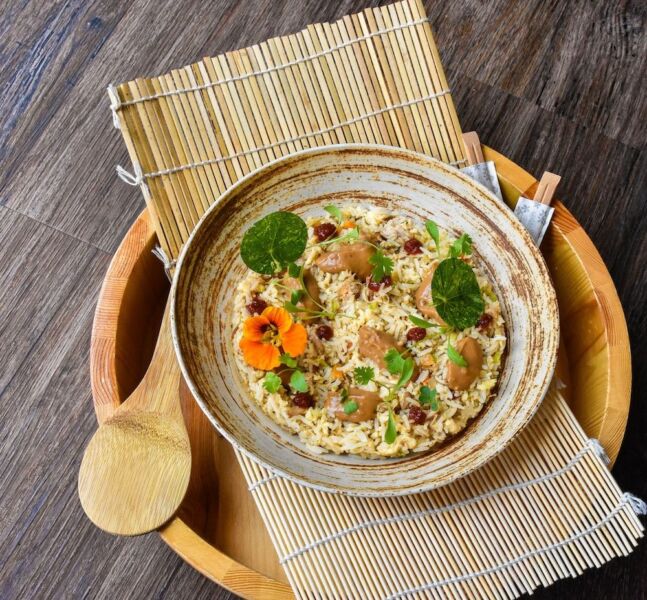
The type of rice used can significantly influence the outcome of your fried rice. In different regional variations of fried rice recipes, you may come across different rice selections. For example, Chinese cuisine often favors long-grain rice, while Thai cuisine leans towards jasmine rice, and Japanese cuisine commonly uses short-grain rice.
Long-grain rice is generally preferred for fried rice due to its non-sticky nature, which allows the grains to maintain their separation during the cooking process. However, for a stickier texture short-grain rice can provide an alternative; though adjustments may be needed to achieve your ideal consistency.
One essential tip to keep in mind is that using freshly cooked rice for fried rice can increase the likelihood of ending up with mushy results. Instead, it is advised that you pre-cook and refrigerate the rice overnight before placing it in the microwave. This allows the grains to dry out slightly and achieve better separation, resulting in a less sticky and more desirable texture.
Why Is My Fried Rice Mushy?
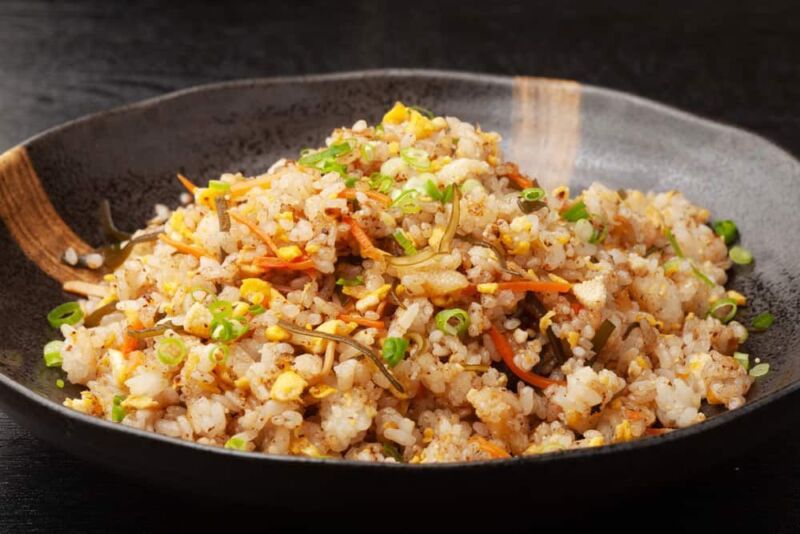
Now let’s uncover the reasons behind the dreaded mushy fried rice.
One common mistake is using freshly cooked rice that has not had a chance to cool and dry out adequately. Freshly cooked rice tends to have a higher moisture content, leading to clumping and mushiness when stir-fried. It is crucial to allow the rice to cool down and dry out slightly before incorporating it into the dish.
Another factor to consider is the cooking method used for the rice. Boiling rice tends to introduce more moisture, which can contribute to the stickiness and mushiness of the final dish. Steaming rice allows for greater control of its moisture level and minimizes the risk of overcooking.
Overcrowding the pan during the stir-frying process can also result in mushy fried rice. When the pan is overloaded with ingredients, the excess moisture released hampers proper evaporation. This excess moisture gets absorbed by the rice, leading to a soggy and undesirable texture. It is best to cook fried rice in small batches, ensuring that each grain has enough contact with the hot surface of the pan.
Furthermore, the choice of additional ingredients can impact the overall moisture content of the dish. Vegetables that contain high water contents, like tomatoes, cucumbers, and zucchini can release excess moisture during the cooking process, rendering fried rice dishes more sticky and soggier than intended. Pre-cooking these ingredients separately or reducing their quantity can help mitigate this issue.
How to Fix Mushy Fried Rice
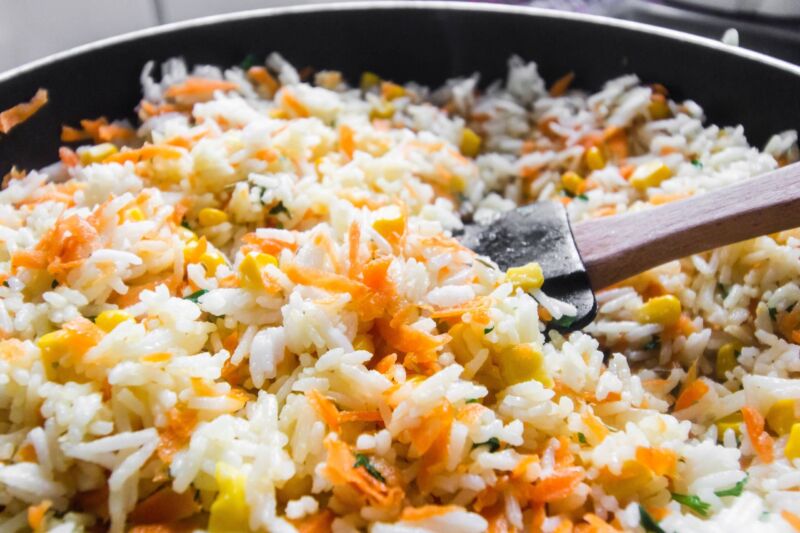
If you find yourself with a plate of mushy fried rice, there are ways to salvage the dish and restore its texture.
One effective method is to divide the large batch into smaller portions and fry them separately in the pan. This technique allows for better heat distribution and encourages the evaporation of excess moisture, resulting in drier and fluffier fried rice.
Or try something different by baking the fried rice in an oven. Spread the mushy fried rice on a baking sheet and bake it at a moderate temperature.
The oven’s dry heat will help eliminate excess moisture and create a crispy texture, transforming the mushy rice into a more appealing dish.
What to Do When Your Fried Rice Goes Mushy
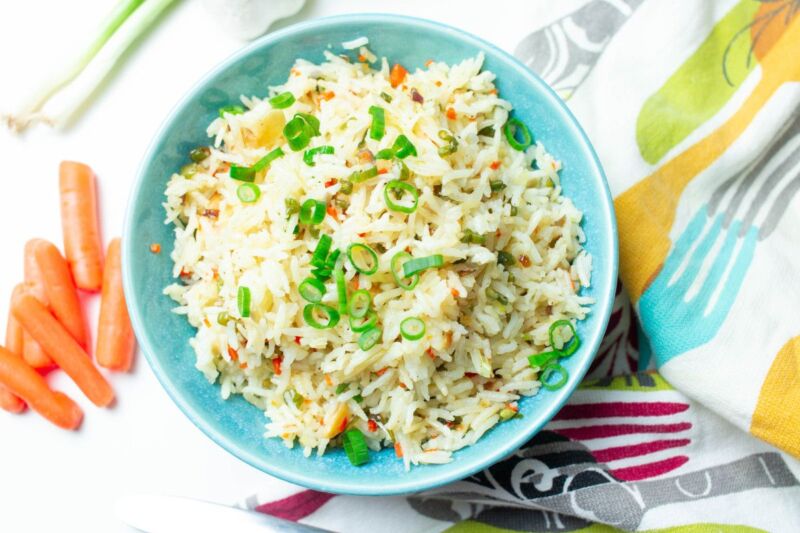
Prevention is always better than cure. By following some proactive measures, you can ensure that your fried rice maintains its desired texture.
As mentioned earlier, preparing the rice in advance and allowing it to cool and dry out overnight in the refrigerator is crucial. This step allows the grains to separate and reduces the risk of moisture-induced mushiness.
Using proper cooking techniques is equally important. Opt for a large wok or skillet to ensure that the rice has enough space to be evenly cooked. Stir-fry the rice in small batches, allowing maximum heat contact and promoting proper evaporation of moisture.
Additionally, consider pre-cooking moisture-rich ingredients separately. By doing this, you can reduce their contribution to the dish’s overall moisture level, and prevent excess liquid from seeping into the grains and creating a sticky texture.
Conclusion
In conclusion, mushy fried rice can be a disappointing outcome when attempting to recreate this beloved dish at home. However, with a better understanding of the factors leading to mushiness and the implementation of some simple techniques, you can consistently achieve perfect fried rice.
Remember to choose the right type of rice, pre-cook and cool it in advance, and utilize proper cooking techniques such as using a large wok and frying in small batches.
By taking these proactive measures, you can bid farewell to mushy fried rice and welcome a plate of flavorful, fluffy, and delicious fried rice every time you cook.

